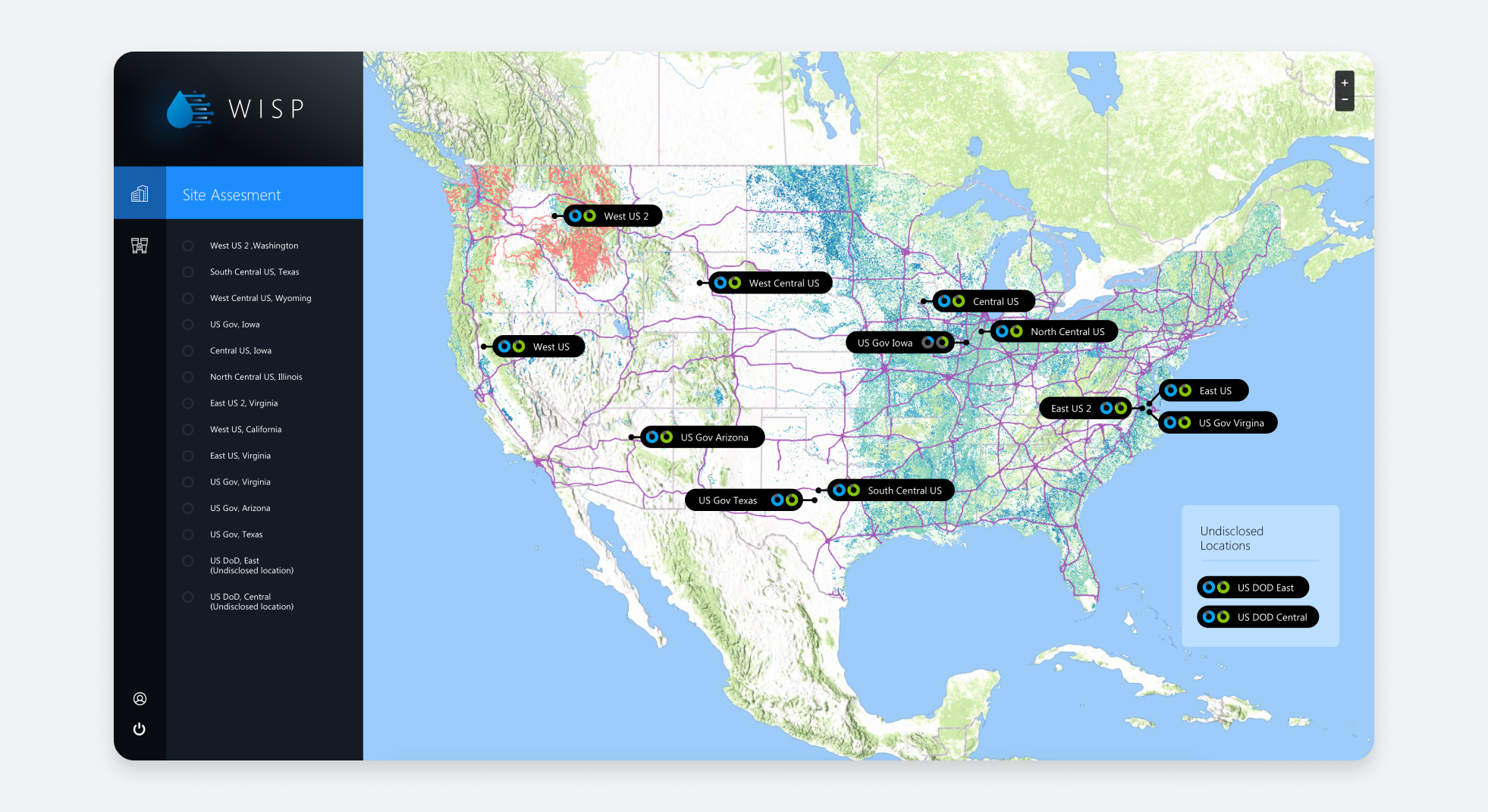Project Background
In a collaborative effort with Microsoft and Waterfunder, Valtira embarked on developing a platform to assess the impact of data centers on local water sources. The project's aim was to create a decision-making tool that would enable Microsoft to identify, recommend, and measure the watershed impact of data center construction and expansion.
My Role in the Project
As the UX Lead, I was responsible for conducting extensive UX research and requirement gathering. Working in close collaboration with the Valtira architecture team, I contributed to the product roadmap and estimation. My primary focus was on the creation of a sleek, visually compelling prototype that effectively displayed data related to potential data center locations.
Project Approach
Our strategy was to phase the implementation, beginning with a web-based tool for monitoring existing data centers and proposed locations. Future phases were planned to delve deeper into water sustainability, incorporating advanced data analysis, AI, and Machine Learning. Simultaneously, we intended to integrate aspects of land, air, and energy sustainability into the platform.
Implementation Strategy
We recommended treating the software solution as a product, involving a dedicated development team and employing agile methodologies for efficient and adaptable product development. This approach was designed to allow the platform to evolve alongside business and industry needs, potentially expanding to various facility types that use water.
UX Goals
Flexible and Usable Design: The prototype was crafted to be user-friendly, catering to both the assessment of new data center locations and the review of existing ones. The design was intentionally flexible to accommodate future enhancements.
Data Center Impact Monitoring: The tool aimed to provide straightforward and timely insights into the watershed quality of data centers, tracking initial, current readings, and goals.
Site Assessment Functionality: For new sites, the tool would offer detailed data for planning and building data centers, followed by ongoing monitoring and goal tracking.
Style Guide
In the initial stages, we developed a style guide that would be further refined in the design phase. The visual theme incorporated Microsoft’s accent colors, simple iconography, and a clean user interface.
Project Outcome
Although the project was shelved after the strategy, prototype, and technical design phases, it represents a significant endeavor in sustainable technology development. The work completed provides a robust foundation for future efforts in this area and showcases my ability to lead UX research and design in creating solutions that are both environmentally conscious and technically advanced. The project, despite not reaching full implementation, demonstrates a commitment to sustainability and innovation in the technology sector.







